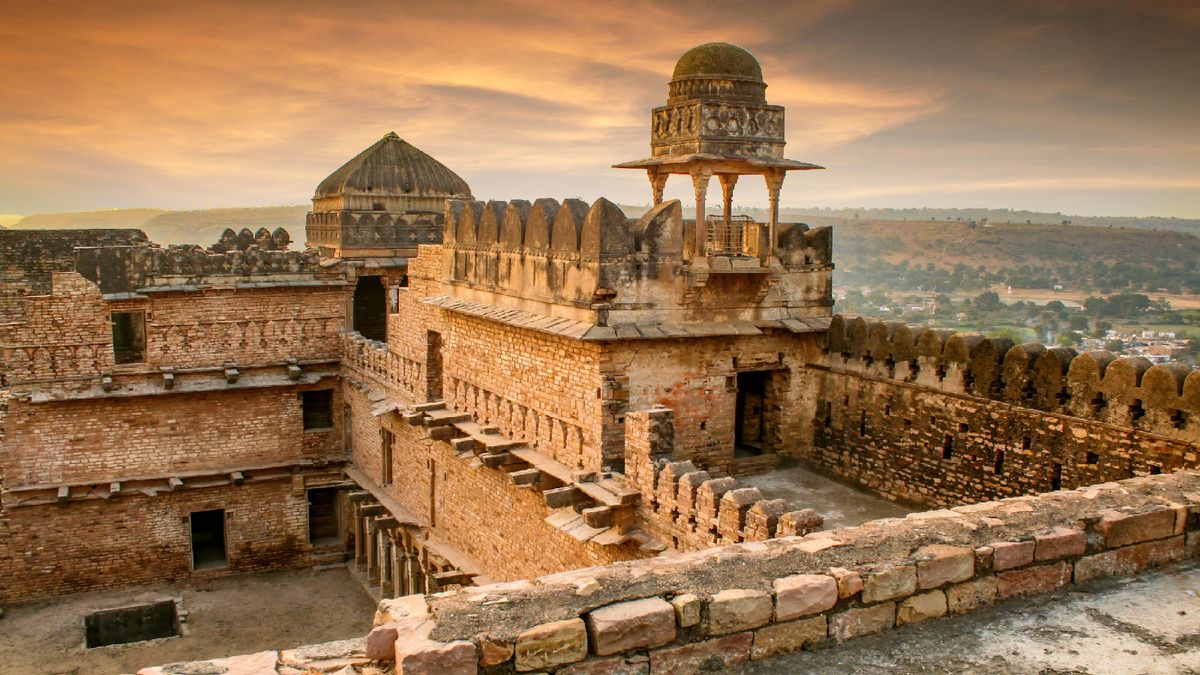Snapshots
Past 7 a.m. on an already warm February morning, I stand on the stepped ghat of Betwa River. A lone saffron-clad sadhu sits gazing at the shimmering river, a few stray dogs frolic around, and birdsong fills the air. I turn around and look at the chhatris or cenotaphs that line the riverbank. The rising sun casts a golden hue on the 14 stone structures that highlight the harmonious blend of Mughal and Rajput influences — the aesthete in me is thrilled to bits. In fact, as I travel through Madhya Pradesh, I'm constantly amazed at the sheer variety and grandeur of the state’s architecture.
Temples of Khajuraho
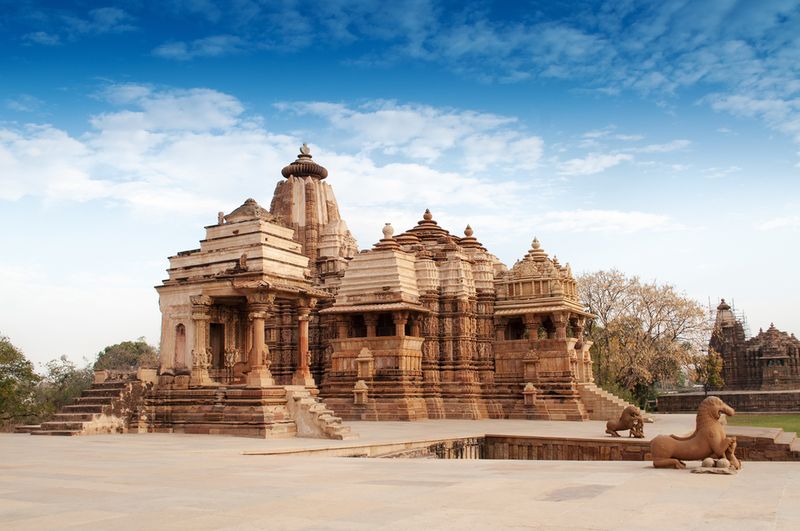
I begin my exploration in Khajuraho where my visit is timed to the annual week-long Khajuraho Dance Festival. Since the classical dance spectacle starts in the evening, my days are free to explore the temples that were built by the Chandela dynasty between the 9th and 11th centuries. By the 12th century, there were 85 temples spread over an area of 20 sq.km., but now only 25 remain.
The UNESCO World Heritage Site is divided into three temple groups – eastern, southern, and western, the last being the largest and most significant cluster. From the eastern and southern clusters, a few temples stand out for their architectural symmetry, like the Chaturbhuj Temple (the only temple in Khajuraho without erotic sculptures) and Dulhadeo Temple (the last to be built). I visit the latter towards sunset when the warm glow makes the soft expressive features of the carved figurines appear even more evocative. While most of the Khajuraho temples are devoted to Hindu gods, a handful are Jain temples like the huge Parshvanatha Temple and the smaller Adinath Temple next to it.
The next morning, I make a sunrise trip to the western cluster. The tourists are yet to arrive, and I have the place to myself. But in front of the Lakshmana Temple, several costumed artistes pose for photographs. I immediately recognise them as Malaysian Odissi dancer Ramli Ibrahim’s troupe who had performed a stirring rendition of the Ramayana at the dance festival the previous night! Nearby, the Varaha Temple has a magnificent monolithic sculpture of Lord Vishnu’s boar incarnation, its entire body carved with numerous figures. My final stop is Kandariya Mahadeva Temple, the largest of the Khajuraho temples, a hulking structure topped with multiple shikharas or spires.
Splendours of Orchha

I reach Orchha early evening and make a beeline for its 16th-century fort complex. Here, I gawk at 500-year-old frescoes that adorn the interiors of Raja Mahal, their colours still vibrant all these years later. Jahangir Mahal stands next door, built in 1605 by Bir Singh Deo for the Mughal emperor Jahangir who spent a grand total of one night here. With its symmetrical square, arcaded doorways, latticed balconies, and large domes, the palace is a glorious example of Rajput-meets-Islamic architecture.
After sunset, a light and sound show illuminates the fort complex, telling stories of a glorious past. One of them pertains to the nearby Ram Raja Temple where Lord Rama is worshipped as a king, not a God. Don’t miss the evening aarti at the temple when he is honoured with a changing of the guard ceremony by the local police force.
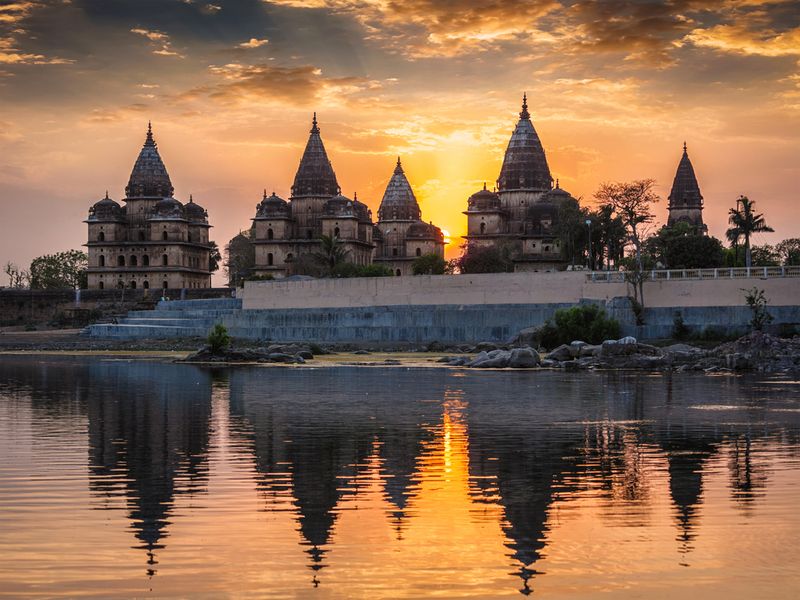
For me, however, the biggest attractions of Orchha are the aforementioned cenotaphs. Built between the 16th and 18th centuries, these funerary monuments pay homage to Orchha’s Bundela kings (they do not represent their burial or cremation site). Most of the cenotaphs are built on elevated platforms, bear decorative carvings, and are topped with conical or domed ceilings. Some are now roosting sites for endangered vultures, which only adds to their sepulchral aura.
Grandeur of Gwalior
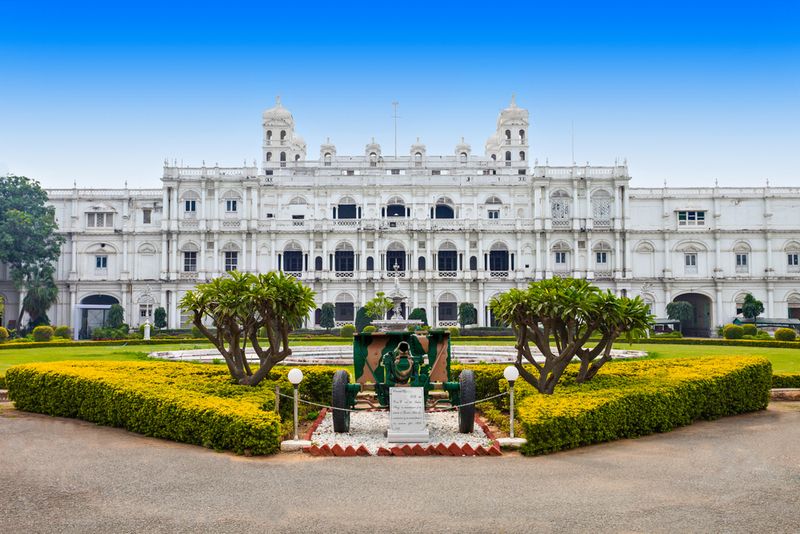
Proceeding further north, I arrive in Gwalior, the princely state that was once the domain of the Maratha dynasty of Scindias who still hold political sway over the city. They reside at Jai Vilas Mahal, an opulent 19th-century palace, part of which is the Jiwajirao Scindia Museum.
The massive palace sports Tuscan architecture, Corinthian columns, and strong Baroque influences. Inside, I’m gobsmacked by the sheer display of wealth and lavish lifestyle of the erstwhile royal family — the largest chandelier in the world hangs in the Durbar Hall, one room is outfitted entirely in crystal furniture, and the dining room has a model silver train that runs on the table carrying post-dinner brandy and cigars — it’s all appropriately over-the-top.
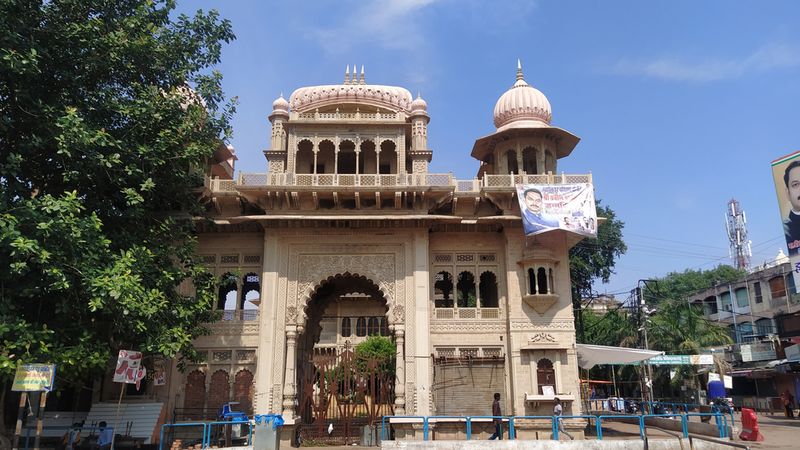
I end my day at Bada (also known as Jiyaji Chowk), the city’s main square surrounded by late-19th and early-20th century buildings of various architectural styles like Indo-Islamic, Oriental, neo-Classical, and more. Pro tip — visit after sunset when the buildings are lit up. Bustling market streets like Sarafa Bazaar, Topi Bazaar and Subhash Market surround the chowk, selling everything from sarees, clothes and jewellery to household items, toys and ittar.

There’s no missing the colossal Gwalior Fort that looms over the city. Dating to the 10th century (or possibly earlier), the fort is a sprawling complex with multiple palaces, temples and water tanks. I find the 15th-century Man Mandir Palace built by Maharaja Man Singh the most eye-catching, its façade adorned with turquoise, green and yellow tiles in a geometric pattern. The pyramidal Sas-Bahu temple has an ornate design as does the Teli ka Mandir, which is the oldest part of the fort and is a beautiful blend of north and south Indian architectural styles. From the fort’s vantage point, I have a bird’s eye view of the Gurjari Mahal built by Man Singh for his Gujjar queen. It houses an excellent archaeological museum with rare artefacts; unfortunately, I have to give it a miss since it’s closed on Mondays but that’s reason enough for me to return to Gwalior soon.


